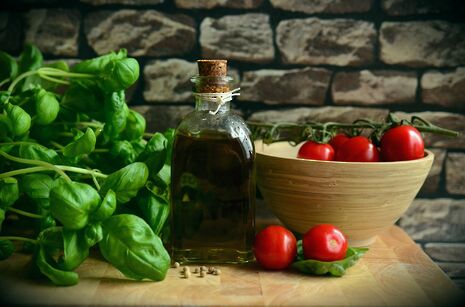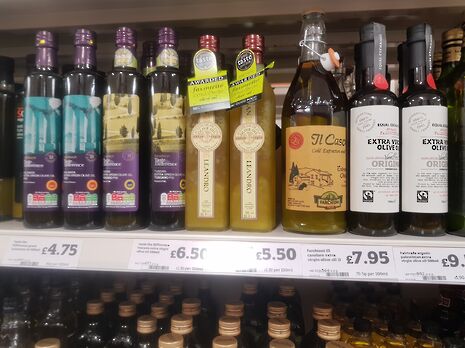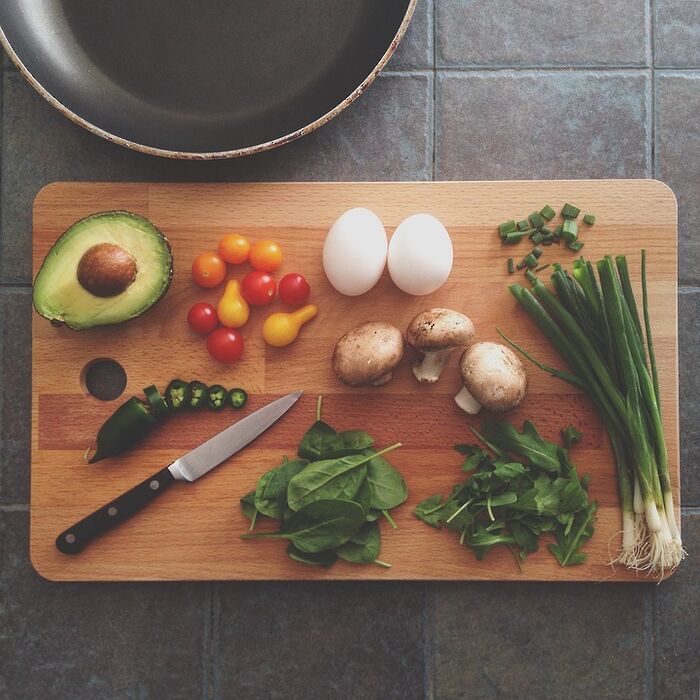Taste the difference
Zach Lande on why it’s worth upgrading your ingredients

For many students, food shopping is just another weekly chore, like doing laundry or changing bedsheets. Trudging through the orange-tinted aisles of Sainsbury’s, wearily picking up items, desperately searching for something on offer. However, it doesn’t always have to be this way. Cambridge students should get excited about their food and see mealtimes as an opportunity for daily motivation. Cooking is a gateway to a sense of satisfaction and accomplishment that can carry you through the day, week after week. Every meal requires ingredients, and in most cases the basic ones will do the job. Nonetheless, it is worth considering the impact of higher-quality ingredients on your meals.
Extra virgin olive oil is a pillar of Spanish, Greek, Italian, and Turkish cuisine. Buying olive is almost like buying wine; there are innumerable regional varieties, compositions, and methods of extraction which affect its taste. In general, the pricing of olive oil reflects its purity and acidity. It’s worth spending a few extra pounds on a large bottle (which will easily stay fresh for a year) because the oil will contain a lower percent of free oleic acid, hence offering you a richer, silkier, and more refined product for you to use in the kitchen as you please.

Dried pasta is a staple of every student kitchen. On the whole, supermarket-brand pasta is usually very good, and I regularly buy it. What I never buy, however, is ‘quick cook’ pasta, which is simply much thinner than conventional versions of pasta shapes, allowing it to hydrate more efficiently. Quick cook pasta tends to have a soft, gummy texture that seems flimsy and insubstantial when compared with the satisfying chew of regular pasta. If you seek a pasta upgrade, then you can’t go wrong with Italian powerhouse brands such as De Cecco, Barilla, Garofalo, or Rummo, which, if cooked al dente,will deliver superb results every time.
Stock is the building block of all the best soups, stews, and sauces. It is time-consuming to make at home, so stock cubes – consisting of dried, compressed ingredients – are readily available. The issue is that these cubes lack gelatin and collagen, the naturally occurring compounds found in animal bones, cartilage, muscles, and skin which give traditional stock the desirable ‘mouth feel’ that adds body and character to dishes. Knorr sells ready-made beef, chicken, fish, and vegetable (using starch instead of gelatin) stock pots which contain these crucial compounds. If you need some inspiration, Michelin-starred chef Marco Pierre White has a dedicated set of recipes on YouTube featuring the handy stock pots.
Cooking is a gateway to a sense of satisfaction and accomplishment that can carry you through the day, week after week.
Salt is the magical mineral which brings ingredients to life; it changes the chemical composition of food and literally makes it taste better. There are many different types of salt which are crafted for specific culinary purposes, depending on their level of coarseness. The gold standard is Maldon, who have been hand harvesting their world-famous sea salt flakes since 1882. These giant, crispy flakes have a fresh intensity and clean taste containing the perfect balance of natural minerals. They are unbeatable for finishing dishes such as salads and steaks, and for seasoning anything to which you want to add crunch, but not too much saltiness.

Tomatoes are a versatile, savoury fruit (or berry, if you want to be specific) and delicious to eat either raw or cooked. The key is to always buy them whilst they are still on the vine, which does cost a bit more. Tomatoes sold on the vine stay plump and juicy for longer, and also have far better flavour. Tomatoes sold off the vine have already lost a considerable amount of their juice in transit, hence become soft and wrinkled quicker. The plum, cherry, and jubilee varieties are always a reliable bet for quality vine-ripened tomatoes.
Parmesan cheese is known as the ‘King of Cheeses’ in the dairy industry. And it’s not surprising why; it is natural, aromatic, salty, with a strong umami taste. When buying this cheese, our instinct is understandably to reach for the packet that says ‘Parmesan’. But what you are buying is not necessarily the real deal, as the name is often used generically to describe similar cheeses made outside of the traditional areas of production in Italy. Instead, look for Parmigiano-Reggiano, which has a Protected Destination of Origin (Denominazione di Origine Protetta in Italian) status in Europe. You may have to pay a little extra for this tangy treat, but it comes with the assurance that you are getting the genuine article.
Armed with your arsenal of high-quality ingredients, see if you can taste the difference in your cooking. Hopefully you will appreciate how small changes to the building blocks of a dish can noticeably improve its flavour and texture. If not, then you can always go back to basics!
 News / Local business in trademark battle with Uni over use of ‘Cambridge’17 January 2026
News / Local business in trademark battle with Uni over use of ‘Cambridge’17 January 2026 News / Cambridge bus strikes continue into new year16 January 2026
News / Cambridge bus strikes continue into new year16 January 2026 Comment / Fine, you’re more stressed than I am – you win?18 January 2026
Comment / Fine, you’re more stressed than I am – you win?18 January 2026 News / News in Brief: cosmic connections, celebrity chefs, and ice-cold competition18 January 2026
News / News in Brief: cosmic connections, celebrity chefs, and ice-cold competition18 January 2026 Film & TV / Anticipating Christopher Nolan’s The Odyssey17 January 2026
Film & TV / Anticipating Christopher Nolan’s The Odyssey17 January 2026










